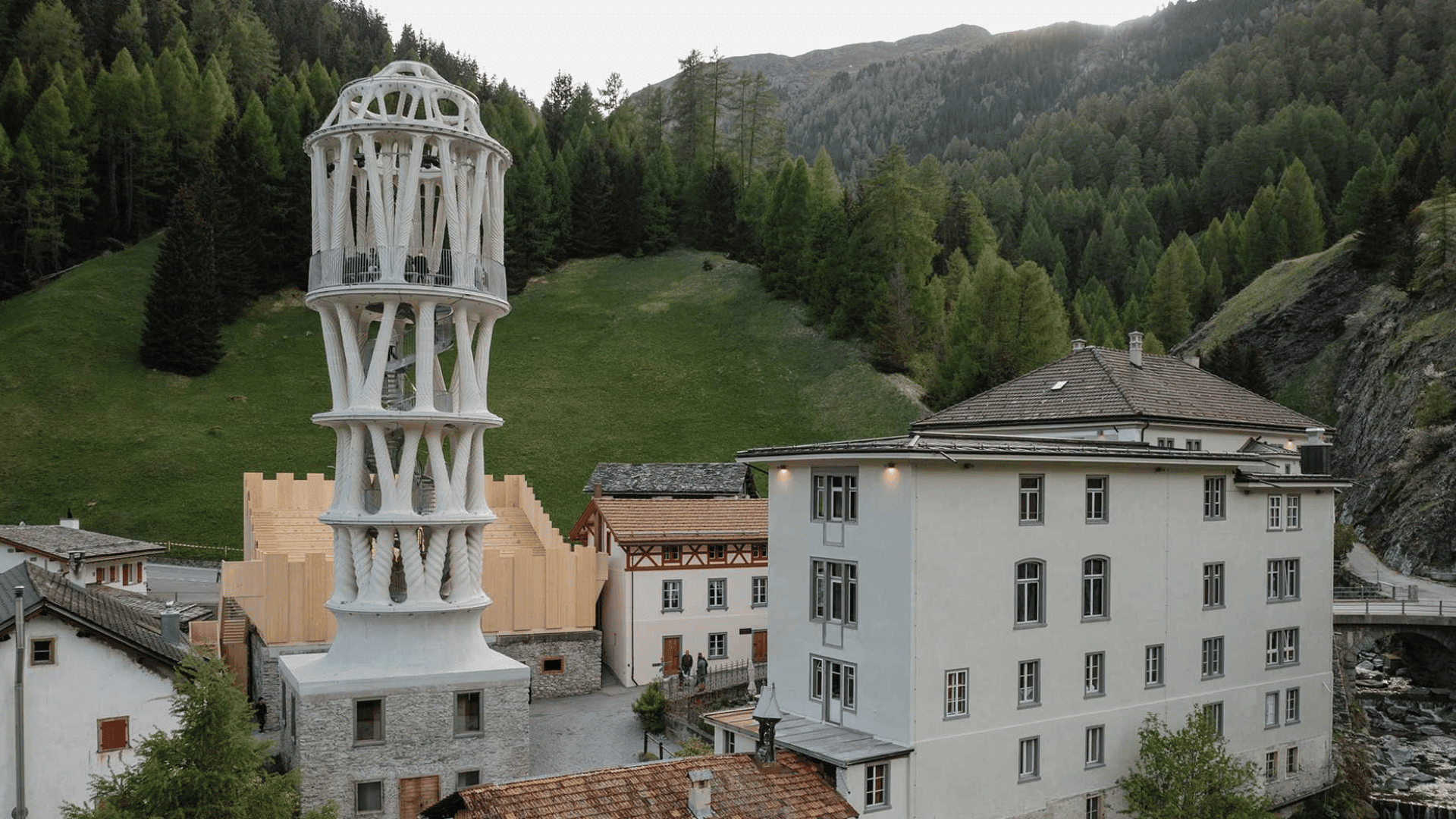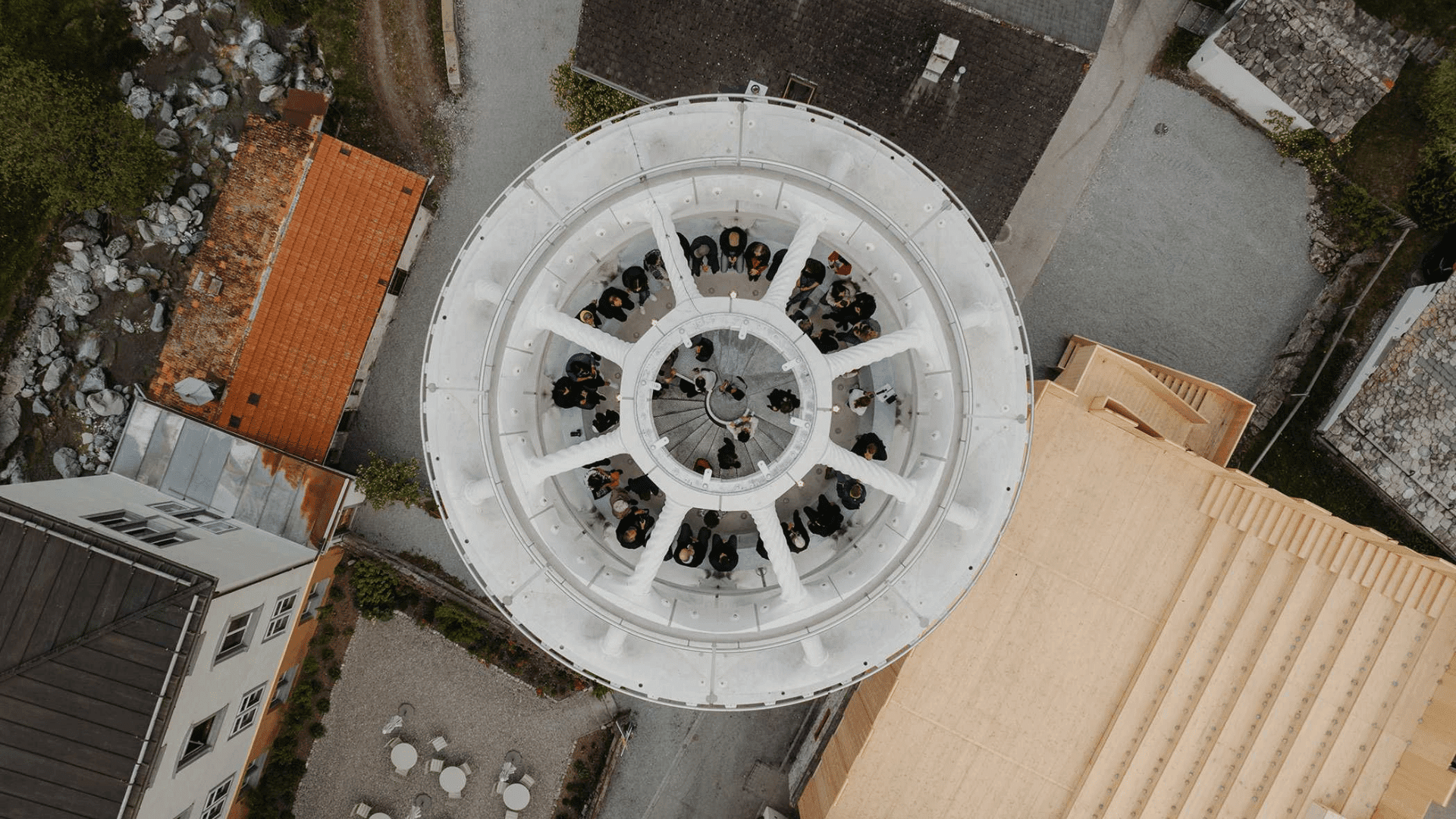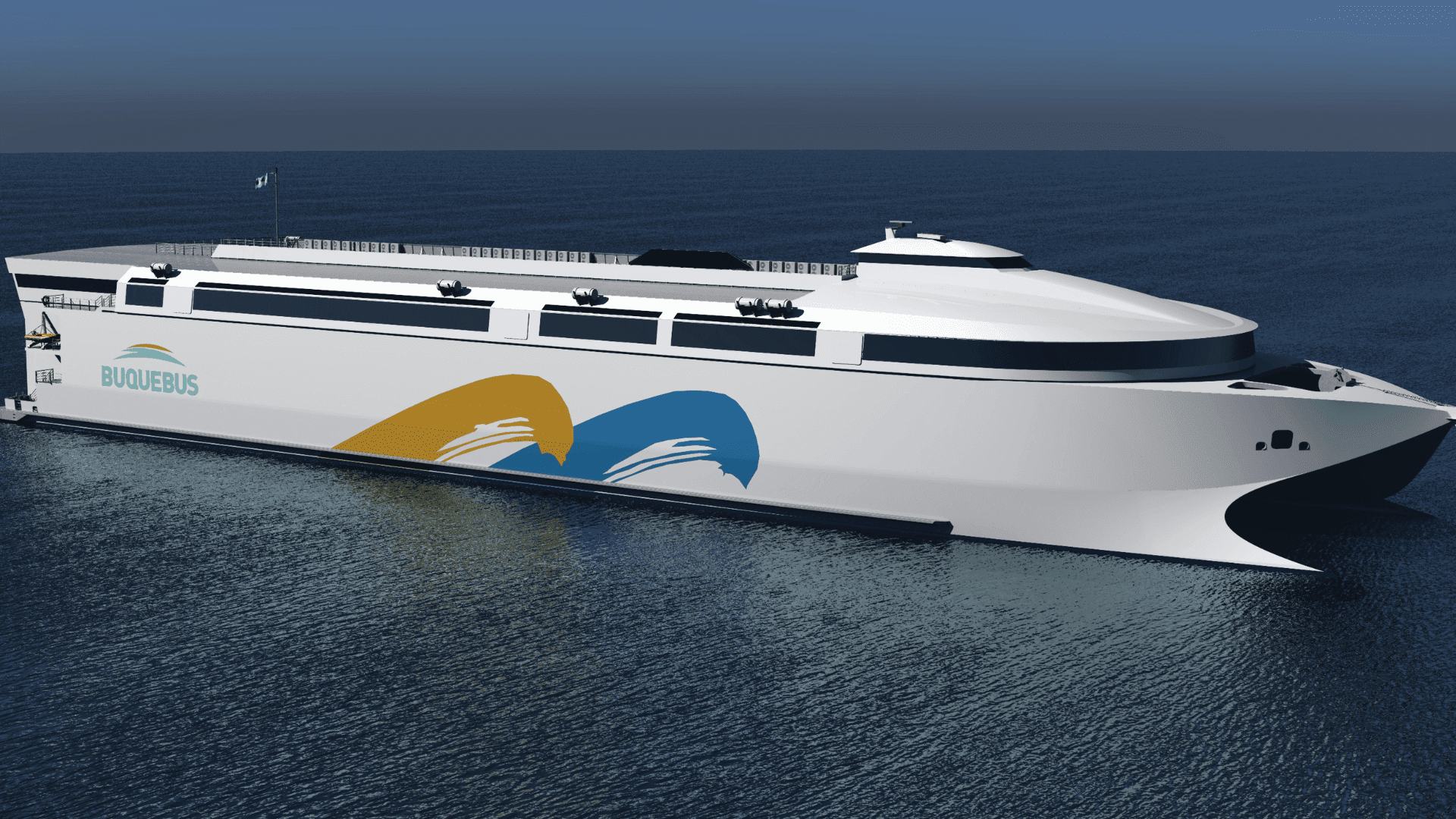Nestled in a small village in the Swiss Alps stands the newly constructed world’s tallest 3D-printed building. Intended to revive the village of Mulegns, the Tor Alva (meaning White Tower in Romansh) is a new architectural landmark.
Unveiling the World’s Tallest 3D-Printed Building

The unveiling of the White Tower woke up the usually sleepy village of Mulegns. In collaboration with ETH Zurich, Origen Cultural Foundation took on this project to explore “the relationship between digital fabrication, cultural heritage preservation, and rural revitalization.”
Mulegns, home to only 11 people, is threatened by depopulation. According to ETH Zurich, their goal was to “celebrate culture and the arts and to give the village a new lease of life.”
The White Tower officially opens on May 23 and will be open daily for guided tours. Starting in July, the building will host staged performances. After about five years, it will be deconstructed and reconstructed in a new location. Construction of the 3D-printed tower started on February 1, 2024, and was completed in just under a year and a half.
The White Tower is 100 feet tall and has a form “reminiscent of an ornate layered cake.”
It has 32 3D-printed sculptured white concrete columns that rise over four stories. As the tower rises, the columns get thinner and branched before fanning out.
New Construction With New Technology

The tower was designed by architect Michael Hansmeyer and ETH Professor of Digital Building Technologies Benjamin Dillenburger.
Instead of traditional methods, the builders used an additive process, in which a robot applies layers of concrete into free-form elements without any supporting casting moulds. Additionally, complex algorithms generated the ornamental and structural aspects simultaneously. To do this, they needed a specialized concrete. They created a concrete that was soft enough to bond while hardening quickly enough to support the layers.
In addition, the team developed a new reinforcement concept that allowed the 3D-printed pieces to serve as load-bearing elements, something that has never been done before. They achieved this with robot-assisted innovation. One robot applied the concrete in layers, a second placed a ring-shaped reinforcement in the new structure every 20 centimeters.
“The White Tower is more than a technical triumph — it inspires the building sector, encourages sustainable tourism, and offers new cultural space,” said Giovanni Netzer, theatre director and founder of the Origen cultural foundation. “It also gives a fading village a new chance. That’s extraordinary.”







